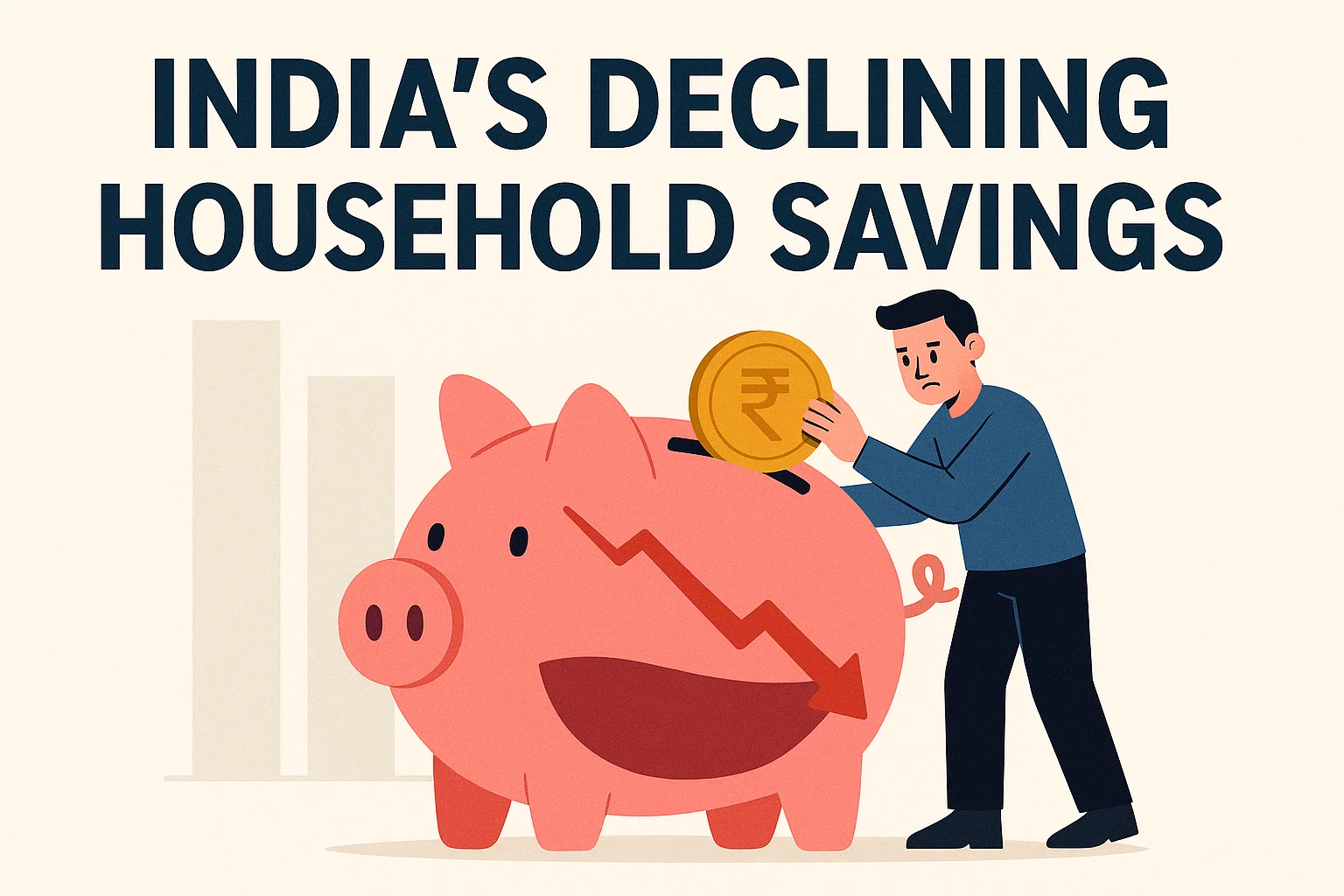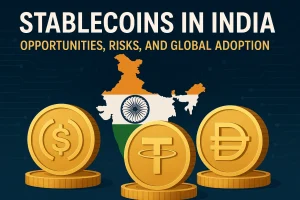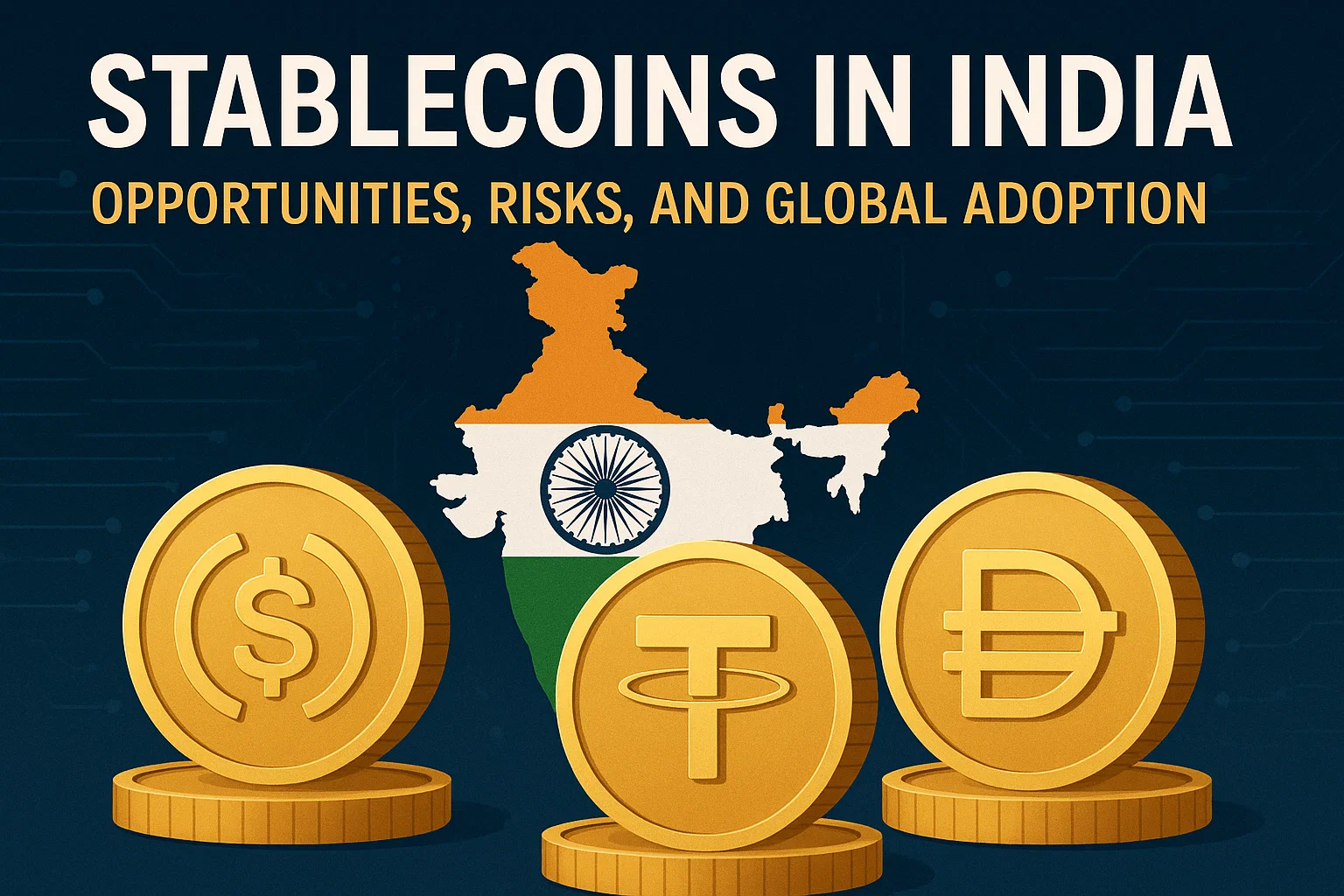India’s Declining Household Savings
India’s household savings are falling to a 50-year low, with rising debt and declining financialisation. Explore causes, macroeconomic risks, and implications for sustainable growth.
Context
While India’s GDP growth remains among the fastest globally, growing concerns have surfaced about the declining strength of household savings. Recent data highlights worrying trends — falling financial savings, rising household debt, and a significant drop in net foreign direct investment (FDI). Together, these signal potential risks to the long-term sustainability of India’s growth model.
Trends in India’s Savings Rate
India’s gross domestic savings rate has been on a downward trajectory, falling from around 35% of GDP in 2011–12 to about 30% by 2022–23, marking a four-decade low. Even more concerning is the decline in household net financial savings, which have dropped from over 10% of GDP during the pandemic to just 5% in 2023–24 — the lowest in nearly 50 years.
A key shift has occurred in how households save. More than 70% of total household savings are now held in non-financial assets such as real estate and gold, while the share in financial instruments like bank deposits, mutual funds, and insurance products has declined steadily.
Simultaneously, household financial liabilities have risen to 6.4% of GDP in FY24, nearly doubling over the past decade. This reflects growing reliance on personal loans, credit cards, and gold-backed borrowing to sustain consumption — a reversal from India’s traditionally conservative savings culture.
Key Factors Affecting India’s Savings Pool
Several structural and behavioural factors have contributed to this decline in savings:
-
Falling Net FDI: Net foreign direct investment, which once supplemented domestic savings, has plunged from over 2% of GDP in the 2000s to barely positive levels in 2024–25. This is due to increased profit repatriation by foreign firms and rising outbound investments by Indian companies.
-
Real Wage Stagnation: Rural and informal sector wages have largely stagnated, reducing households’ capacity to save after meeting essential consumption needs.
-
Credit-Fuelled Consumption: With digital lending, ‘Buy Now, Pay Later’ schemes, and easy credit availability, especially among the youth, the traditional culture of thrift is giving way to consumption-driven borrowing.
-
High Inflation: Persistently high inflation in food and fuel prices has squeezed disposable incomes, compelling families to dip into savings or increase borrowing.
-
Low Financialisation: Less than 10% of Indian households invest in capital markets or non-bank financial instruments, leaving the bulk of household wealth locked in unproductive assets like gold and property.
Macroeconomic Implications
The decline in savings is not just a household issue — it has broad macroeconomic consequences:
-
Reduced Capital Formation: Lower domestic savings mean less capital available for private and public investment. India could become more dependent on volatile foreign capital inflows, increasing exposure to global shocks.
-
Fiscal Strain: Declining savings reduce the pool of funds available to finance government deficits, pushing up borrowing costs and complicating fiscal consolidation efforts.
-
Banking and Credit Constraints: With deposits stagnating and savings moving to non-financial assets, banks face challenges in mobilising low-cost funds, limiting their lending capacity for productive sectors like manufacturing and infrastructure.
-
Debt-Driven Consumption Risks: A rising debt-to-savings ratio can boost short-term consumption but threatens long-term financial stability — a pattern reminiscent of the 2008 global financial crisis, where excessive household borrowing led to systemic stress.
-
Comparative Context: East Asian economies, notably China and South Korea, sustained growth rates above 7% for decades by maintaining savings rates of 35–40% of GDP, fuelling domestic investments and industrial expansion.
-
Inequality and Vulnerability: The erosion of household savings weakens financial security, reducing buffers for healthcare, education, and retirement. This widens inequality, as wealthier households continue to benefit from financial markets while poorer segments struggle with debt and inflation.
Conclusion
India’s declining household savings present a structural challenge to its growth story. Without sufficient domestic savings, reliance on external capital could rise, increasing vulnerability to global volatility. Strengthening real incomes, encouraging financial literacy, and deepening access to formal savings instruments will be critical to rebuilding the nation’s financial resilience. Long-term growth will depend not just on output expansion but on ensuring that households — the backbone of India’s economy — remain financially secure and capable of sustained investment in the future.
Subscribe to our Youtube Channel for more Valuable Content – TheStudyias
Download the App to Subscribe to our Courses – Thestudyias
The Source’s Authority and Ownership of the Article is Claimed By THE STUDY IAS BY MANIKANT SINGH



